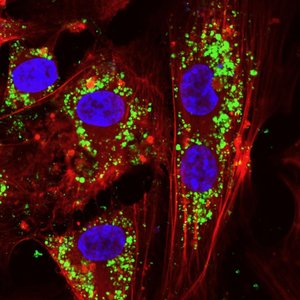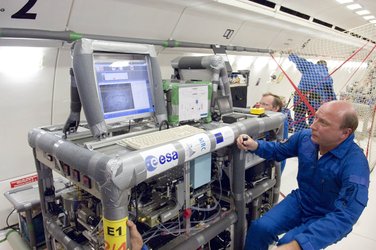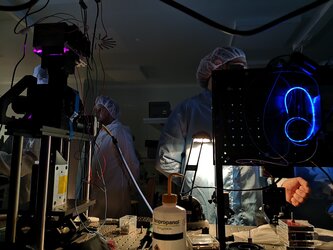Accept all cookies Accept only essential cookies See our Cookie Notice

About ESA
The European Space Agency (ESA) is Europe’s gateway to space. Its mission is to shape the development of Europe’s space capability and ensure that investment in space continues to deliver benefits to the citizens of Europe and the world.
Highlights
ESA - United space in Europe
This is ESA ESA facts Member States & Cooperating States Funding Director General Top management For Member State Delegations European vision European Space Policy ESA & EU Space Councils Responsibility & Sustainability Annual Report Calendar of meetings Corporate newsEstablishments & sites
ESA Headquarters ESA ESTEC ESA ESOC ESA ESRIN ESA EAC ESA ESAC Europe's Spaceport ESA ESEC ESA ECSAT Brussels Office Washington OfficeWorking with ESA
Business with ESA ESA Commercialisation Gateway Law at ESA Careers Cyber resilience at ESA IT at ESA Newsroom Partnerships Merchandising Licence Education Open Space Innovation Platform Integrity and Reporting Administrative Tribunal Health and SafetyMore about ESA
History ESA Historical Archives Exhibitions Publications Art & Culture ESA Merchandise Kids Diversity ESA Brand Centre ESA ChampionsLatest
Space in Member States
Find out more about space activities in our 23 Member States, and understand how ESA works together with their national agencies, institutions and organisations.
Science & Exploration
Exploring our Solar System and unlocking the secrets of the Universe
Go to topicAstronauts
Missions
Juice Euclid Webb Solar Orbiter BepiColombo Gaia ExoMars Cheops Exoplanet missions More missionsActivities
International Space Station Orion service module Gateway Concordia Caves & Pangaea BenefitsLatest
Space Safety
Protecting life and infrastructure on Earth and in orbit
Go to topicAsteroids
Asteroids and Planetary Defence Asteroid danger explained Flyeye telescope: asteroid detection Hera mission: asteroid deflection Near-Earth Object Coordination CentreSpace junk
About space debris Space debris by the numbers Space Environment Report In space refuelling, refurbishing and removingSafety from space
Clean Space ecodesign Zero Debris Technologies Space for Earth Supporting Sustainable DevelopmentLatest
Applications
Using space to benefit citizens and meet future challenges on Earth
Go to topicObserving the Earth
Observing the Earth Future EO Copernicus Meteorology Space for our climate Satellite missionsCommercialisation
ESA Commercialisation Gateway Open Space Innovation Platform Business Incubation ESA Space SolutionsEnabling & Support
Making space accessible and developing the technologies for the future
Go to topicBuilding missions
Space Engineering and Technology Test centre Laboratories Concurrent Design Facility Preparing for the future Shaping the Future Discovery and Preparation Advanced Concepts TeamSpace transportation
Space Transportation Ariane Vega Space Rider Future space transportation Boost! Europe's Spaceport Launches from Europe's Spaceport from 2012Latest

ARLES experiment
Thank you for liking
You have already liked this page, you can only like it once!
ARLES experiment setup at the Esrange Space Center in Sweden.
The ARLES experiment (Advanced Research on Liquid Evaporation in Space) investigates how liquids evaporate in microgravity. The research focuses on understanding how liquids can best be used to transfer heat and could help improve thermal control systems in space.
Temperature control is a constant preoccupation for engineers on Earth, but even more so in space where the extreme environment requires innovative solutions to keep equipment and astronauts at the right temperature.
The experiment will repeatedly evaporate droplets of less than 10 microliters in microgravity under different conditions – including adding an electric field to the mix – to see how they behave. Infrared video and interferometers record the process for researchers around the world to analyse.
One liquid will include graphene nanoparticles, an innovative material which is of particular interest among the scientific community. The experiment will also increase understanding of how nanoparticles in the fluid coats surfaces as the fluid evaporates.
Daniele Mangini, ESA’s science coordinator for the experiment says, “This technique could be a novel way of creating smart coatings, membranes and sensors and even create complex nano-structures. Nanoparticles are difficult to test in the closed environment on the International Space Station, so a sounding rocket campaign is ideal for this experiment.
“Weightlessness is necessary for this analysis. On Earth, gravity causes the deposits to spread unevenly, which is often detrimental for applications. It is more difficult to investigate the underlying phenomena because many effects, such as sedimentation, thermo-capillarity and natural convection make it hard to focus on what we are interested in researching.
“The six exciting minutes in microgravity will allow the scientific team to disentangle the different processes, helping to understand characteristic signatures during nano-particle deposition and self-assembly.”
-
CREDIT
ESA -
LICENCE
ESA Standard Licence

Nanoceria

Nano Antioxidants results

Prof. Oleg Kabov conducting the experiment on flim e…

Shining lasers for Space Station experiment















 Germany
Germany
 Austria
Austria
 Belgium
Belgium
 Denmark
Denmark
 Spain
Spain
 Estonia
Estonia
 Finland
Finland
 France
France
 Greece
Greece
 Hungary
Hungary
 Ireland
Ireland
 Italy
Italy
 Luxembourg
Luxembourg
 Norway
Norway
 The Netherlands
The Netherlands
 Poland
Poland
 Portugal
Portugal
 Czechia
Czechia
 Romania
Romania
 United Kingdom
United Kingdom
 Slovenia
Slovenia
 Sweden
Sweden
 Switzerland
Switzerland
























